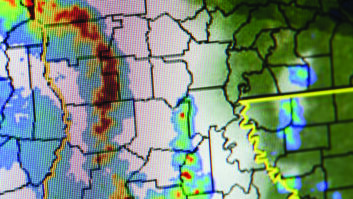For further evidence the evolution of EAS is coming along in fits and starts, look to another government report.
Though the Federal Emergency Management Agency has taken actions to improve the capabilities of the Integrated Public Alert and Warning System and to increase federal, state and local capabilities to alert the public, barriers remain to fully implement an integrated system.
That’s the gist of a report on emergency alerting released by the Government Accountability Office.
Congress asked the GAO to review recent efforts to implement IPAWS and improve EAS.
While the report was released in April, it’s only coming to light now.
Although FEMA has taken important steps to advance an integrated system, state and local alerting authorities the GAO contacted cited a need for more guidance from FEMA on how to integrate and test IPAWS capabilities with their existing alerting systems. “For example, an official with a state alerting authority said that additional guidance from FEMA is needed to determine what systems and policies should be put in place before integrating and testing IPAWS with other public alerting systems in the state’s 128 counties and cities,” said the GAO officials who prepared the report.
In the absence of sufficient guidance from FEMA, states the GAO report, alerting officials that were contacted are reluctant to fully implement IPAWS. Maine Association of Broadcasters President Suzanne Goucher said on the SBE listserv that means the feds can’t mandate that local officials take part in alerting.
Regarding the 2011 national EAS test, the report duly notes the poor audio quality of the FEMA origination message is being addressed in part, with the deployment of a dedicated satellite network that will become operational by this fall. We recently reported FEMA is adding Clear Channel subsidiary Premiere Networks as a Primary Entry Point station.
However, at the time of the review, FEMA and FCC had taken few steps to address other problems identified in the nationwide test, according to the GAO. Furthermore, while FCC rules call for periodic nationwide EAS testing, it is uncertain when the next test will occur. Without a strategy for regular nationwide testing of the relay distribution system, including developing milestones and timeframes and reporting on after-action plans, there is no assurance that EAS would work as intended, says to the GAO.
The GAO provided the report to both FEMA and the FCC and said FEMA agreed with the recommendations to strengthen IPAWS. The FCC didn’t say whether it agreed or not but noted that the agency recently released its own report on the results of the national EAS test. The GAO believes that report includes potential actions that could address the GAO’s recommendations in the future.
For example, the FCC’s April report includes recommendations for the agency to begin a rulemaking on state EAS plans and to encourage alerting original authorities to make sure those plans have accurate EAS monitoring assignments. The commission recently issued a notice to this effect.
Other FCC recommendations include beginning a rulemaking to examine equipment-performance issues during a test activation and developing a new nationwide EAS test reporting system database to “improve” filing electronic data from EAS participants.
The GAO notes that the FCC intends to develop a strategy with FEMA for regular nationwide EAS testing.










